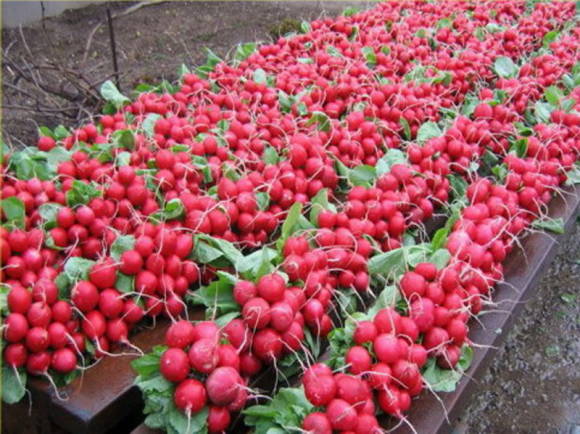Watermelon is one of the most ancient plants cultivated by man. In ancient Egypt, it was already known 4000 years ago, as evidenced by its perfectly preserved images.

Watermelon has an exceptionally high taste and is, obviously, the most popular dessert dish. Watermelon pulp and juice quench thirst well and improve appetite. But did you know that everyone's favorite watermelon, eaten for dessert as a delicacy, has been an excellent medicine since ancient times?
Watermelon juice is compared by naturopathic doctors and nutritionists to living water. Indeed, watermelon has the richest chemical composition. It contains up to 10% of easily digestible sugars (mainly glucose and fructose) and very little organic acids - only 0.1%. The pulp of watermelon contains a large amount of pectin substances.
Watermelon is not rich in vitamins, with the exception of folic acid. The mineral composition is dominated by salts of calcium, sodium, phosphorus, magnesium. It also contains a lot of iron (up to 1 mg%), which has a beneficial effect on the organs of hematopoiesis, the cardiovascular system, and the endocrine glands.
Watermelon is one of the leaders among berries, fruits and vegetables in terms of magnesium content. The deficiency of this macronutrient, which is necessary for maintaining the cardiovascular system, occurs faster in the heat, since magnesium is excreted in sweat and a large amount of fluid consumed.

The fact that watermelon is an excellent cleansing agent was known in ancient times. The Romans ate it fresh and salted, and made honey from it. The great physician of the East, Ibn Sina, wrote that watermelon has the property "... to cleanse the body and take diseases out of the body, if taken constantly before meals."
And today the season of watermelons is a home holiday season for patients with disorders of the cardiovascular system, the activity of the urinary and digestive organs.
The pulp of watermelon has a strong diuretic, mild laxative, choleretic and anti-inflammatory effect. It is useful for diseases of the liver and urinary tract, for anemia and cardiovascular diseases, for patients with atherosclerosis and high blood pressure.
The strong diuretic properties of watermelon are due to the high content of water in its pulp (at least 80%) and alkaline compounds. Alkalis convert salts precipitated in urine - potassium, urate, oxalate - into a more soluble state, preventing them from forming into sand or stones. A watermelon-forced diuresis, which flushes the urinary tract well, removes these salts and excess uric acid from the body.
By its structure, watermelon juice is the same "living" water that is in the cells of our body and regulates the acid-base balance. This is especially important in case of violation of water-salt metabolism, which is present in patients with chronic kidney diseases, therefore, watermelon is useful for patients with nephritis.
A decoction of watermelon peels is also used as a diuretic. To do this, boil 1 part of crushed watermelon peels in 10 parts of water and take a decoction of 0.5 cups 3-4 times a day.
And if you remove a thin surface layer (zest) from a fresh watermelon rind and dry it, you will get a strong diuretic. It is taken 0.5 teaspoon before meals. It simultaneously improves bowel function in children.

Watermelon pulp is a valuable dietary product. If the patient needs food unloading, then it is solved by consuming up to 2.5 kg of watermelon per day. The same diet is used for urolithiasis, cystitis, pyelonephritis. Naturally, such treatment can be carried out in summer or autumn, since it is almost impossible to fully preserve the pulp of a watermelon for its use in winter.
In case of kidney stone disease, the alkalinity of urine under the influence of alkaline substances contained in watermelon increases, salts become soluble and are excreted due to the diuretic effect.At the same time, it is necessary to strive for uniform consumption of watermelon, i.e. eat it in portions even at night.
The intense urine flow also flushes the kidneys and urinary tract while simultaneously removing grains of sand from the body.
Filling the stomach with watermelon fiber causes a quick feeling of satiety, which, combined with a strong diuretic effect, makes watermelon indispensable for people suffering from severe obesity. Such fasting days are arranged 1-2 times a week, eating the whole portion of watermelon in 5-6 receptions.
For example, what else can you eat with pleasure and in large quantities if you are overweight? At the same time, get enough quickly, but without extra calories? Of course, watermelon.
The practice of watermelon treatment is simple: eat watermelon for breakfast and lunch. If you are hungry, you can eat it with black bread. In people with a sick gastrointestinal tract, this combination can cause bloating, so they need to gradually increase watermelon portions, listening to the sensations of the body.
Watermelon is used for diseases of the liver, gallbladder, and edema associated with diseases of the cardiovascular system. And the white pulp, located immediately behind the green crust, has an even stronger diuretic effect.
But with gallstone disease, watermelon peels are also used to cleanse the bile ducts in folk medicine. To do this, 5 tablespoons of chopped and dried crusts must be poured into 1 liter of boiling water and boiled over low heat for 25-30 minutes. Then let the broth brew at room temperature for 35–40 minutes and filter it. The broth is taken in 1 glass 20 minutes before meals 4-5 times a day. The same broth is used for diseases of gastritis and colitis.
Due to the presence of a significant amount of folic acid, watermelon is useful for any type of anemia, for diseases of the blood and hematopoietic organs during pregnancy and lactation. With anemia and to stimulate hematopoiesis, it is necessary to use watermelon without any restrictions.
Watermelon is useful as a means of removing cholesterol from the body, with hypertension, gout, arthritis, diabetes. Due to the presence of a large amount of fiber, intestinal motility increases, digestion improves. That is why watermelon fiber is useful for women suffering from constipation during pregnancy.
In folk medicine, in case of fever and irritation of the urinary tract, "watermelon milk" is used. To prepare it, watermelon seeds are pounded in a mortar, then ground with cold water in a ratio of 1:10 until a milky liquid is formed, sugar is added to taste. Strain it and drink 1 teaspoon 5-6 times a day.
Watermelon seed oil contains linoleic and linolenic acids and can successfully replace expensive almond oil, it also tastes great.
Watermelon peels for medicinal purposes can be prepared for future use. They must be cut into small pieces no more than 1 cm in size, laid out on a baking sheet in one layer and dried in the oven. Drying can be done in a well-ventilated area out of direct sunlight.
Treatment with watermelon is not recommended for stomach and duodenal ulcers, diseases that cause fluid retention in the body, colitis, gastritis with high acidity, diarrhea.
But watermelon also has one more property, it is a good "cosmetologist". For facial skin care, masks made from watermelon pulp are used. But you can also use one juice, which always remains on the plates. To do this, a gauze folded in several layers is impregnated in it, which is then applied to the skin of the face and neck. After 20 minutes, it is removed, the remaining juice is washed off with water, a cream is applied to the skin.
This procedure can be applied every other day, it tones up dry skin that has lost its elasticity. Watermelon juice refreshes well and improves color, makes the skin soft and elastic
With freckles and excessive skin pigmentation, an emulsion from watermelon seeds, which is described above, is applied several times a day.
"Ural gardener" No. 34, 2016







